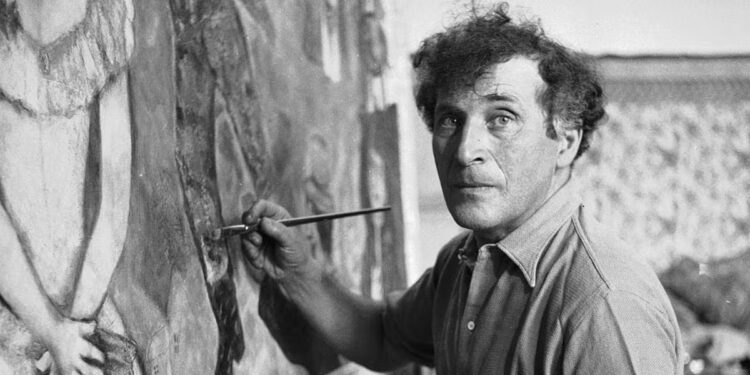Marc Chagall (1887–1985) was a Belarusian-French artist known for his dreamlike paintings that blended reality with fantasy. His works, filled with vibrant colors and floating figures, captured themes of love, nostalgia, and spirituality. Chagall’s artistic style defied strict categorization, incorporating elements of Cubism, Fauvism, and Surrealism, making him one of the most unique artists of the 20th century.
Early Life and Influences
Born in Vitebsk, then part of the Russian Empire, Chagall grew up in a Jewish family, and his cultural background deeply influenced his art. He was drawn to painting from a young age and studied in St. Petersburg before moving to Paris in 1910. There, he was exposed to avant-garde movements, which greatly shaped his artistic vision.
Chagall’s early works often depicted scenes from his childhood, Jewish traditions, and Russian folklore. His paintings, such as I and the Village (1911), feature surreal compositions filled with floating characters, animals, and symbolic motifs. His use of bold colors and poetic imagery set him apart from his contemporaries.
Career and Style
After a brief return to Russia during World War I, where he worked on revolutionary art projects, Chagall moved back to France. His art evolved but retained its dreamlike quality, infused with themes of love and longing, especially after he married his beloved wife, Bella. Their relationship became a central theme in his paintings, such as Birthday (1915) and Lovers in the Red Sky (1950s).
During World War II, Chagall fled to the United States to escape Nazi persecution. The horrors of war and the loss of Bella in 1944 deeply impacted his work, leading to darker tones in some pieces. However, he continued to explore themes of peace and hope.
Chagall also worked in stained glass, murals, and set designs, leaving his artistic mark on cathedrals, opera houses, and public spaces worldwide. His stained-glass windows for the United Nations and the Jerusalem Windows remain some of his most celebrated contributions.
Legacy
Marc Chagall’s art remains timeless, evoking emotion and imagination. His unique fusion of folklore, spirituality, and modernist experimentation ensures his place as one of the most influential artists of the 20th century. Whether through paintings, stained glass, or murals, Chagall’s art continues to inspire, reminding the world of the power of color and dreams.
newshub











Recent Comments